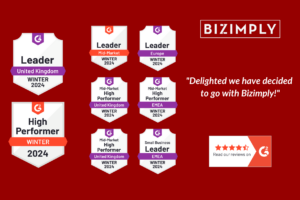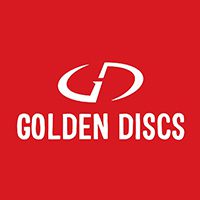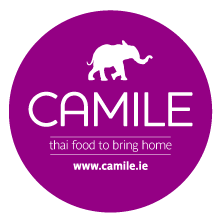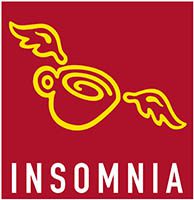Sign new employees’ contracts, complete training, make sure the employees are aware of any updates on your company’s policies, etc… Those are just some of the many ways that you may need your employees’ signatures daily.
In today’s article, I want to walk you through some interesting facts about the history of signatures and the new ways of signing that are bringing safer solutions to managers and employees.
On top of that, we’re going to go over the difference between electronic and digital signatures and talk about all the different kinds of digital signatures out there.
Want to know why so many businesses are transitioning to e-signatures? Ok, so let me show you!
When did we start using signatures?
We have been singing things for almost 5,000 years! Around 2900 BC, Mesopotamian temple scribes appeared to have begun recording the names of the people involved in their transactions.
Signatures were, in fact, always around.
We saw:
- The boom of autographs, where signatures turn into a way to memorise celebrities and artists;
- Brand logos based on a stylised autograph, like Walt Disney;
- The first description of an idea of an Electronic Signature in the late ’70s, by Whitfield Diffie and Martin Hellman;
- E-signatures becoming legally binding in the 2000s;
- And the rise and fall of handwritten signatures to secure the authenticity of documents…

Why are all businesses transitioning to e-signatures?
Did you know that cheque fraud in the UK resulted in a loss of £7.5 million in 2022? Fraudulent wet signatures are a significant factor contributing to the forgery of checks.
You know how banks and other money-handling places are always trying to make sure things are legit? Well, one way they’re doing that is by using electronic signatures instead of the old-school pen and paper.
From a manager’s perspective, especially in HR, the rise of the use of alternatives to wet signatures came from a need to increase the efficiency of HR functions. Sticking to pen and paper solutions wasn’t gonna cut it anymore. Something had to be done. That’s when the transition to e-signatures started.
Society thought needed to find a way to secure the authenticity of documents in a non-paper environment. That’s why we have been chatting about Electronic Signatures since the UN Commission on International Trade Law established guidelines for using E-signature in 2001.
On top of that, once we started to use digital alternatives to wet signatures due to the changes in the business environment during the pandemic, the use of wet signatures decreased. Mostly because e-signatures provide not only an easier option but also a safer alternative for business. The electronic signature market was grown exponentially since 2021 and is projected to keep growing by 2029.
Allied with the amount of money lost daily, the higher demand for non-paper alternatives due to the pandemic and the growing marketing of e-signatures, the transition to e-signatures became the norm in the business world.
Here at Bizimply, we found the gap in our product while interacting with our consumers and realizing that some of them were still using a pen-and-paper process on onboarding new hires. That’s when we knew that something has to be done. And our partnership with Dropbox Sign was born. Want to learn more? Check out the video below.
But what is an e-signature?
The UK Electronic Identification, Authentication, and Trust Services Regulation (UK eIDAS) defines an e-signature as:
“data in electronic form which is attached to or logically associated with other data in electronic form and which is used by the signatory to sign”.
In simple terms, an e-signature lets other people know that you’re the one who signed the document in the digital world and sets the standard for the methods we have right now to sign documents. Those standards are an important reason why most businesses are transitioning to e-signatures, which make the process way more secure.
Electronic signatures can be Digital Signatures and they have different functions and usability when it comes to signing a document. In simple terms, it’s like an electronic fingerprint.
What are the different types of Digital Signatures?
There are three types of Digital Signatures and they serve different purposes:
- Simple Electronic Signatures (SES): These are basic electronic signatures that can be attached to electronic data. They may be legally binding in some cases, but since they do not require identity verification, it’s up to the person accepting the document to trust them.
- Advanced Electronic Signatures (AES): Taking a step further in the identity verification of signatures, this type of signature uses certificates to identify the signer. Those certificates are then sent through a secure delivery service.
- Qualified Electronic Signatures (QES): The eIADAS regulation has additional requirements that only Qualified Electronic Signatures meet. The signer’s identity must be verified by an audited entity along with the certificates based on secure technology. This identification can be done in person or remotely.
Realising the significance of digitising daily processes is essential. Bizimply’s partnership with DropBoxSign was designed based on the day-to-day of hospitality, retail and care managers and the types of signatures that would fit your needs.
With Bizimply’s integration with DropBox Sing, you can easily request and receive digitally signed documents from your employees. Besides no longer dealing with piles of paperwork or wasting time at the printer, you can also say hello to a more secure way to deal with your employees’ data.
If you are a Bizimply customer, get in touch with your customer success manager and request your Client ID.
Curious about Bizimply? Have a 15-minute chat with one of our sales representatives today.
Did you like our content? Share with a colleague!









